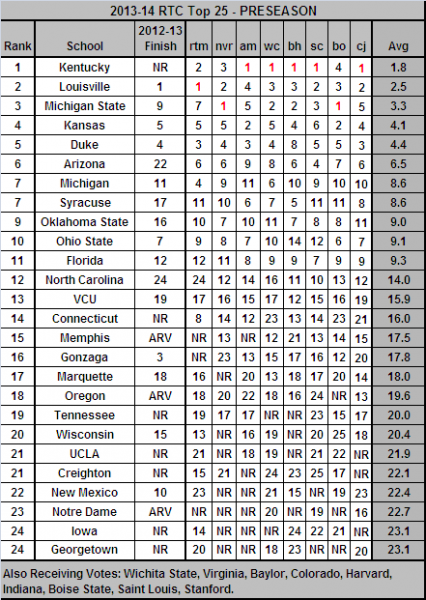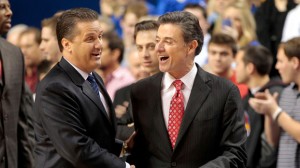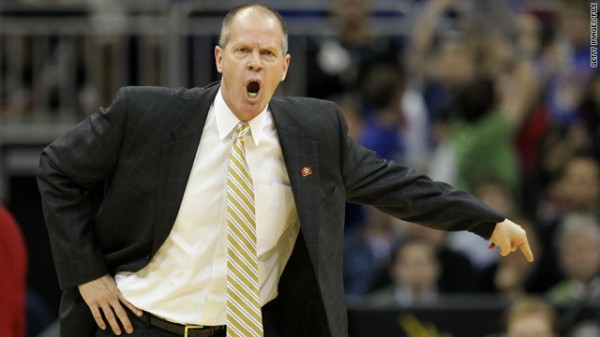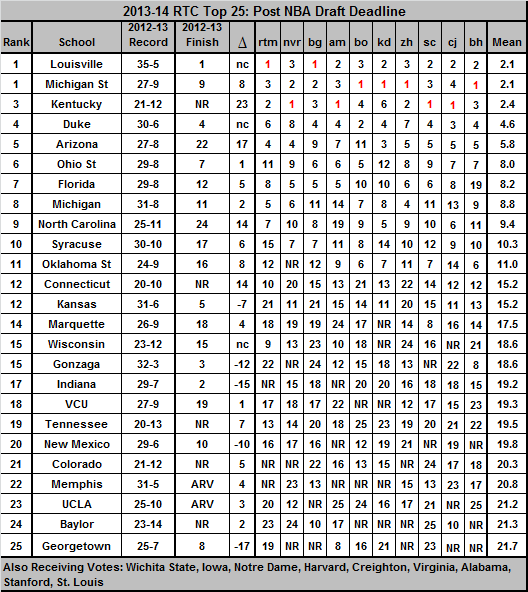Posted by Chris Johnson on March 24th, 2013

Chris Johnson is an RTC Columnist. He can be reached @ChrisDJohnsonn.
Tonight’s Lede. Third Round Ahoy! The first weekend of NCAA Tournament play is a refined product. After a second-round customarily filled with upsets and wacky outcomes, the next stage puts sheer team quality over luck and happenstance. This is where the true contenders make their bread. Part one of the third round wrapped up Saturday night, and save for a few surprising results, the best teams by and large validated their putative reputations.
Your watercooler moment. Drop The Revisionist Committee Tongue-Lashings.

The anti-Gonzaga backlash is about to ramp up considerably (Getty Images).
There is nothing more casually distasteful than hindsight Tournament declarations and Monday morning quarterbacking. It happens every year. Middle Tennessee got run by Saint Mary’s, they never deserved an at-large birth! New Mexico never deserved to be a three seed! The Mountain West is terrible! All of those proclamations have been uttered in various forms, on various mediums, and all of them are patently false. Trying to argue against a certain team’s Tournament placement or inclusion after the fact is like ordering a manifestly scrumptious steak entrée at a five-star restaurant, leaving disappointed with the way it turned out and advocating the dish’s removal from the restaurant menu during the ride home. It’s not fair or to validate previous logic with future outcomes. That won’t stop anyone from copping to lazy criticisms of Gonzaga’s No. 1 seed status in the wake of Saturday’s upset loss to nine-seed Wichita State. Was Gonzaga tested in the same way as, say, Louisville or Indiana on a weekly basis in conference play? No. Did Gonzaga deserve a number one seed (or at least deserve to be in the argument), after posting a 30-2 win-loss record, a 4-2 record against the RPI Top 50, the No. 4 efficiency offense and No. 18 defense in the country? You’d be forfeiting your credibility as an objective and rational college hoops observer to disagree. The Bulldogs may have lost to a hot Wichita State team, may have blown an eight-point second half lead, may have allowed a physical Shockers group too much room on the perimeter. But they didn’t lose their claim to all of the aforementioned credentials. The selection committee’s vague criteria has offered up decades of case evidence to analyze, and by their admittedly fuzzy standards, Gonzaga deserved to be a No. 1. Their early third-round dismissal does not change that fact.
Also worth chatting about. Michigan Turns Major Third-Round Hurdle Into Cakewalk.
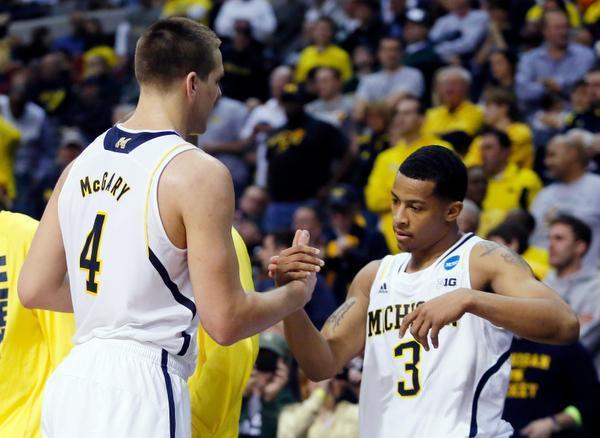
The Rams had no answer for McGary Saturday (AP Photo).
Recent history affects NCAA Tournament bracket intellect in real and influential ways. When paired with commendable regular season results, that team is extremely difficult to ignore – no matter the opponent. It’s part of why VCU beating Michigan Saturday looked like such a cinch “upset” pick, and completely why Michigan’s 25-point demolition of the Rams was more of an “upset” than a VCU win could have ever been. Mitch McGary played the best game of his college career to date (21 points, 14 rebounds), the Wolverines kept turnovers at a manageable level (12), and when the Rams can’t induce cough-ups they can’t get stops. The final product: Michigan has its first Sweet Sixteen appearance since 1994. The Wolverines more resembled their early-season national title-contender form Saturday that at any point this season. When Burke is dishing to open shooters and slashing into the lane, when Tim Hardaway Jr. is presenting matchup problems all over the floor, Michigan is – just as many suspected in November and December – a bona fide national title threat. Throw in the possibility of a potent interior presence in McGary, and John Beilein’s team will give the winner of Sunday’s Roy Williams Bowl (Kansas-UNC) all it can handle and more. Michigan is in the Sweet Sixteen for the first time in nearly two decades, and I wouldn’t be surprised if its journey blows past that minor landmark.
Read the rest of this entry »
| after the buzzer, Regular Features
| Tagged: arizona, butler, cal, colorado state, gonzaga, harvard, louisville, marquette, memphis, michigan, oregon, saint louis, syracuse, vcu, wichita state
Share this story






























